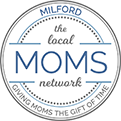Portion Sizes for Kids: How Much Food Is Healthy for My Child’s Age?
By: Jennifer Zarrilli, MS, RD
Some days, figuring out what to feed your child is hard enough. Figuring out how much can seem downright impossible. The recommended portions for a child depend on their age and even gender – and unfortunately, the serving size listed on grocery store labels doesn’t have much to do with it.
Connecticut Children’s is here to help. Here’s our guide to understanding healthy food portions for kids, including some time-saving tips.
Learn how to eyeball standard portions of common foods.
One of the reasons healthy portions seem so complicated? Different types of food are measured in different ways, from ounces to cups to teaspoons. Sure, you could rely on measuring cups and kitchen scales. But if you want a shortcut when it’s time to portion out food, you can also make rough measurements by imagining familiar items – or just using your hand.
The chart below is adapted from the Academy of Nutrition and Dietetics. Here are other handy visuals.
Standard Portions of Common Foods
Fruits
- In general, 1 cup looks like a tennis ball.
Vegetables
- In general, 1 cup looks like a baseball.
Protein
- Lean beef or poultry: 3 ounces (oz.) looks like a deck of cards
- Grilled or baked fish: 3 oz. looks like a checkbook
- Peanut butter: 1 oz. looks like a ping-pong ball
Grains
1 ounce looks like:
- Bread: DVD cover
- Dry cereal: Baseball
- Cooked cereal, rice or pasta: Half a baseball
- Pancake or waffle: DVD
- Bagel, hamburger bun: Hockey puck
- Cornbread: Bar of soap
Dairy
In general, 1 cup looks like a baseball.
Oils
1 teaspoon (tsp.) looks like:
- Oil or salad dressing: The cap on a 16-oz. water bottle
- Margarine: Standard postage stamp
Related: Meal Prep Made Easy: Make Cooking at Home Easier, Healthier and Fun for Kids
Follow your child’s daily portion recommendations.
After a little practice with the above chart, you should find it easier to tell at a glance how much fruit is about a cup, how much sliced bread is an ounce, etc.
Now, here’s how much to serve your child each day, based on MyPlate.gov.
Daily Portion Recommendations by Age
Ages 2 to 3
- Fruit: 1 cup
- Vegetables: 1 cup
- Protein: 2 oz.
- Grains: 3 oz.
- Dairy: 2 cups
- Oils: 3 tsp.
Ages 4 to 8
- Fruit: 1 to 1.5 cups
- Vegetables: 1.5 cups
- Protein: 4 oz.
- Grains: 5 oz.
- Dairy: 2.5 cups
- Oils: 4 tsp.
Ages 9 to 13
- Fruit: 1.5 cups
- Vegetables: 2 cups (girls) / 2.5 cups (boys)
- Protein: 5 oz.
- Grains: 5 oz. (girls) / 6 oz. (boys)
- Dairy: 3 cups
- Oils: 5 tsp.
Ages 14 to 18
- Fruit: 1.5 cups (girls) / 2 cups (boys)
- Vegetables: 2.5 cups (girls) / 3 cups (boys)
- Protein: 5 oz. (girls) / 6.5 oz. (boys)
- Grains: 6 oz. (girls) / 8 oz. (boys)
- Dairy: 3 cups
- Oils: 5 tsp. (girls) / 6 tsp. (boys)
Download an app to make healthy eating easier.
Technology to the rescue! Check out choosemyplate.gov and download the “Start Simple with MyPlate” app for help putting all of the above into practice. The app will offer you personalized tips to include foods from all five food groups – fruits, vegetables, protein, grains and dairy – in everyday meal choices.
You might also like:


